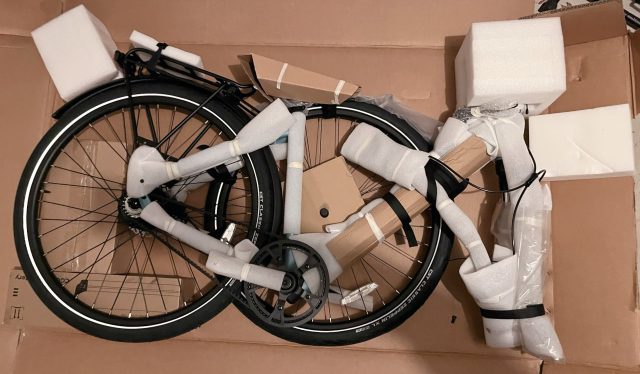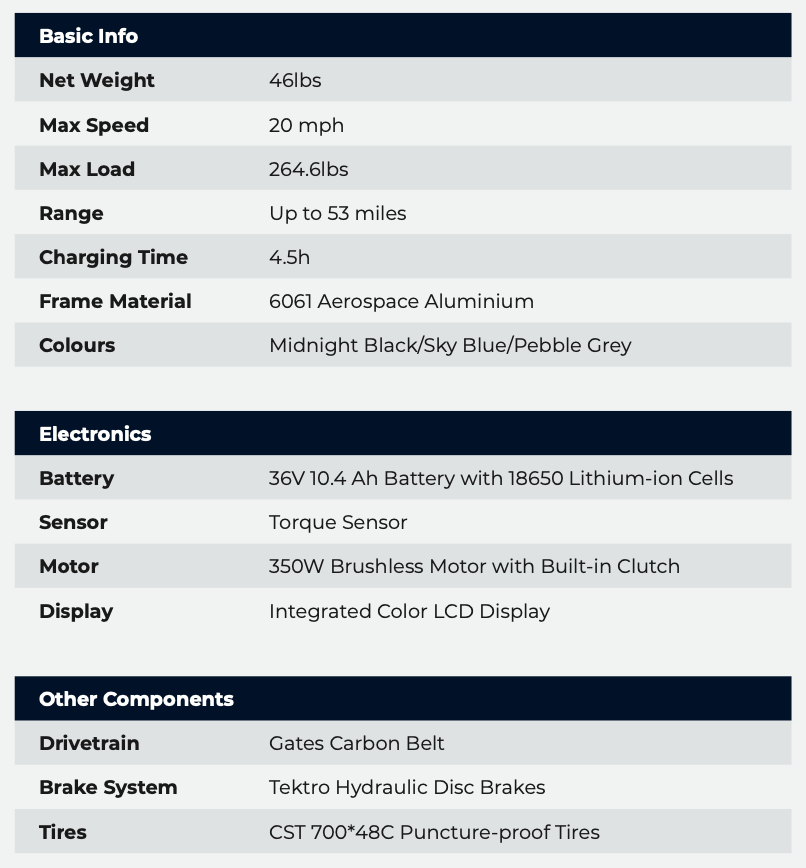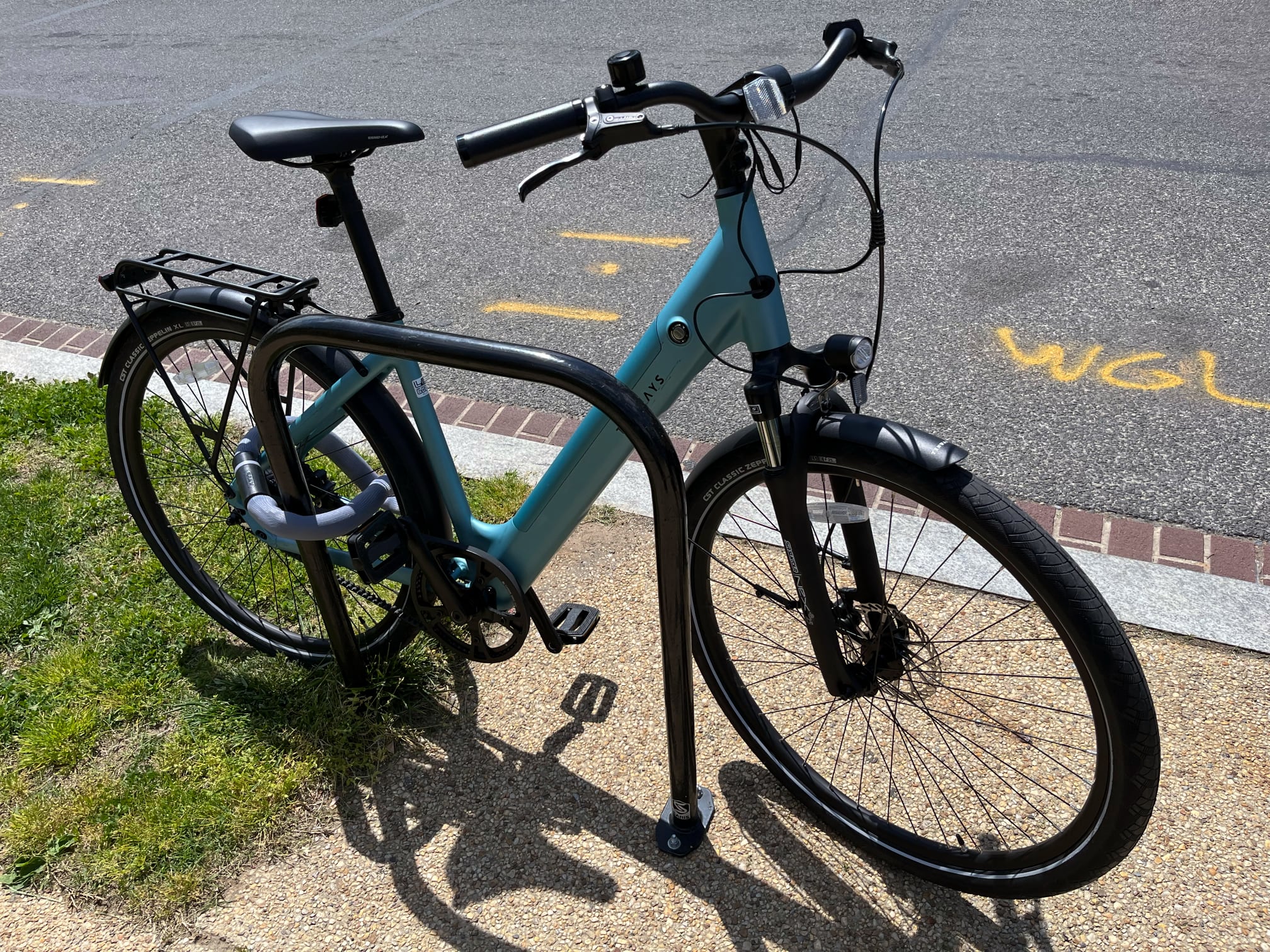I enjoyed riding the Tenways CGO800S far more once I stopped thinking of it as a bike, and more like the e-bike version of a reasonable four-door sedan.
It is a bike, to be sure. It has two wheels, handlebars, pedals, and a drivetrain between feet and rear cog. It's just not the kind of bike I'm used to. There are no gears to shift between, just a belt drive and five power modes. The ride is intentionally "Dutch-style" (from a Dutch company, no less), with a wide saddle and upright posture, and kept fairly smooth by suspension on the front fork. It ships with puncture-proof tires, sensible mud guards, and integrated lights. And its 350 W motor is just enough to make pedaling feel effortless, but you'll never quite feel like you're winning a race.
I also didn't feel like I was conquering the road when I was on the CGO800S so much as borrowing my aunt's car for an errand. The "Sky Blue" color helped cement the image of a modern-day Mercury Sable in my head. It's not meant for no-power riding, and its battery isn't a long-hauler, with a stated 53-mile range. It's comfortable, it's capable, and maybe we've long since reached the stage of the e-bike market where some bikes are just capital-F Fine, instead of them all being quirky experiments.
All this is to say I didn't have any real issues with the CGO800S itself, beyond some notable matters of build quality and wonky display software. There are e-bikes in the same $1,700 price range that look far more slick, have more traditional bike shapes and postures, or have a lot more range or power. But here's this package of comfort, convenience, and capability, and once you get it assembled and tuned up, it's quite handy.











 Loading comments...
Loading comments...
